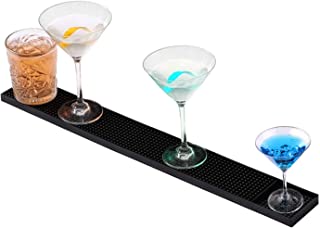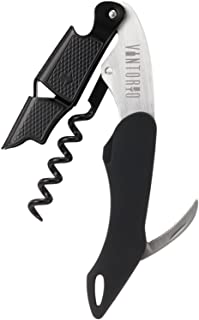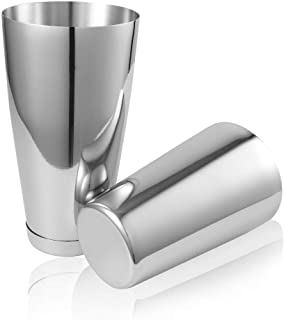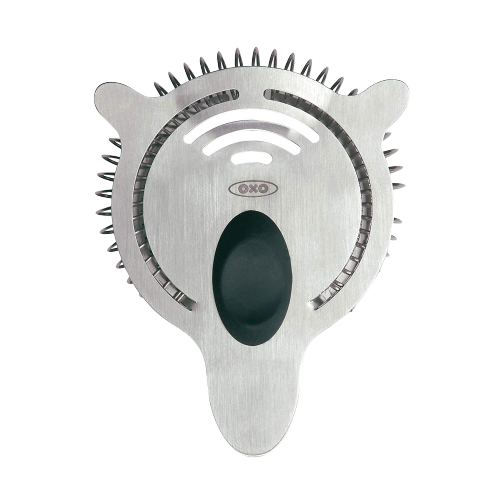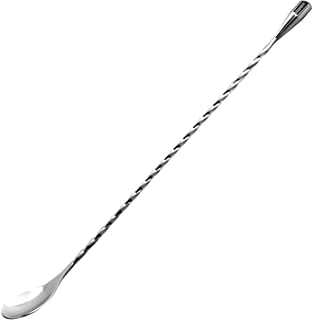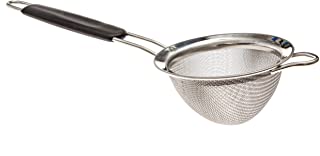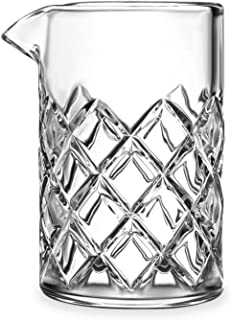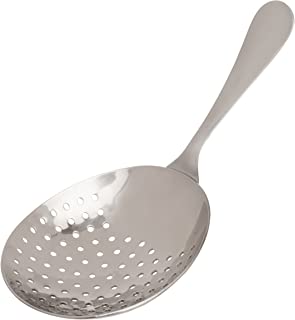Contents
Every bar comes equipped with various bartender tools. And believe it or not, it can get quite confusing. From shiny spoons and shakers… to various filters, mallets, and spouts – there’s a fairly big list of bar equipment.
Just like a chef and his knives, bartenders rely on their tools all throughout the shift. Without these bartender tools, the drinks we all love wouldn’t taste nearly as good. Proportions would be all over the place, and our creativity would be very limited.
Every aspiring bartender will have to get comfortable with them…
So today I’m going to break down the various bartender tools, general bartending equipment, and cocktail essentials. These are tools that every establishment should have stashed behind the bar.
Here’s what this post will cover:
- The Best Mixology and Bar Set
- Bartender Essentials – general bartender tools and equipment stashed behind the bar
- Cocktail Essentials – the common tools bartenders use to craft drinks
- Garnishing Tools
- Bartending Tools (Non-Essentials) – these are bartender tools and equipment that not every bar will have.
- Where to Buy Your Bartender Tool Kit – A few suggestions on where to look for a bartending tool set.
Simply put, by the end of this post, you’ll have a damn good idea on what each bartender tool is specifically used for. I am an expert bartender with 30-plus years of bartending experience… and to this day, I STILL use the tools the shown below nearly every shift.
As we go through the list, keep in mind that you may have some of these items already in your own kitchen or household. Although I can spend days explaining how to master these tools, I cannot teach you how to physically get comfortable using them. If you find any of these around the house, spend some time trying them out. Practice. Get creative. This will help you in a very big way, especially if you’re new to bartending.
Let’s begin!
The Best Starting Mixology and Bar Set
In this post, we will be covering all the individual pieces of equipment you should have as a bartender. But, when starting out as a bartender, one of the easiest moves to make is to buy a kit that contains all of the essentials.
As long as you buy high quality, a bartender set can last a lifetime. And after testing out dozens of sets, we suggest the ones made by A Bar Above. They are made from high quality, food-grade stainless steel so they will not rust or fall apart.
Bartending Essentials: Common Bartending Tools and Equipment
1. Bar Mats
Unlike your ordinary kitchen mat, bar mats are placed on the bar – not the floor. Bar mats are mainly used to prevent spills and any ingredients from flying off the bar and onto the floor. Made from rubber, they grip on to any glassware and bartending tools you are using while crafting a drink. The last thing you want is everything slipping off the table or shifting around. Bar mats are your best friend. They keep your office desk organized, sanitary, and clean. And you only have to clean them maybe once or twice every day.
2. Bar Towels
I won’t spend too much time on this one as it’s pretty obvious. Bar towels should be within arms reach during all hours of your shift. The bar or establishment will most likely provide you with plenty of them, so use them up. Wipe down the bar spot where people sit, keep everything clean in front of them. Wipe down any messes, clean up any spills, and keep things tidy and fresh all around.
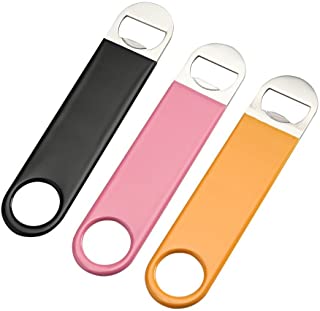
3. Bar Blades
For an efficient and professional way of opening beer bottles in front of your guests, use a bar blade. They are quick, easy, and blue-collared. You never know when your bar blade will come in handy.
4. Lighter
For starters, some creative cocktails like Light-up Shooters (shots) or Orange Zests require a flame. But drink crafting aside, lighters are used for lighting candles around the bar and helping out customers when they need a smoke. Be that bartender that always has a lighter on them – you’ll save the day on many occasions.
5. Wine Key
Wine keys are designed for a couple different things. The obvious answer is that they’re your go-to when you need to open corked bottles of wine. But they can also be used to snap open beer bottles. You may have seen a “winged” wine opener at your parents house, but wine keys are more efficient and slightly cheaper. Just like the bar blade, this fits in your pocket or apron and is a no-brainer to have on your hip at all times. Here is a great example.
6. Knife & Cutting Board
A quality, sharp, and small knife is another quintessential bartending tool. Customers will often want their drinks garnished. Garnishes are drink decorations or embellishments that many specialty recipes require. Olives, herbs, and orange slices are perfect examples. And that’s where our handy knife comes into the play.
The best bartending knives aren’t too big as you are only slicing fruits and vegetables. There’s no need to buy one that’s bigger than the size of your palm. Additionally, you want a knife with a serrated blade. This will make slicing lime and lemon wedges easier. There’s nothing worse than attempting to quickly slash your garnishes with a flimsy, dull knife, so invest in a good one.
Another no-brainer – you’ll need a cutting board. Most bars will provide you with one. They are safer and more hygienic than the bar top. And if you’re slicing and dicing without a cutting board, you’ll slowly begin to ruin your knives and whatever surface you’re cutting on. We suggest a simple, dishwasher safe cutting board.
7. Pens
A common rule of thumb is to have 2 pens on you during every shift. Why two? Because you may end up losing one. People rarely pay with cash anymore. You’ll need a good pen for customers to sign off their card transaction. And you may need another one write down large orders or other inventory notes behind the bar.
8. Pour Spout
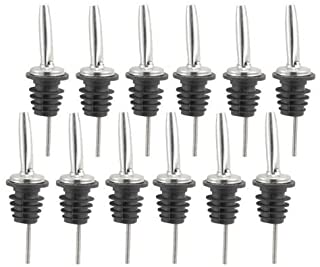
Pour spouts, also known as speed pourers, are the spouts you’ll see at the ends of bottles. They are your flow control tool for pouring… and ultimately, speed up the drink crafting process. The spout will vastly improve your proportion accuracy and consistency in comparison to pouring straight out of the bottle.
It’s worth noting some pour spouts are calibrated differently. If your bar uses different branded spouts, try and stick with one you are comfortable with. Otherwise, you may have to learn the timing on each spout individually.
9. Ice Buckets & Ice Scoops
Ice may be the last thing on your mind if you’re new to the world of bartending. But the importance of it is often overlooked. The truth is, ice is one of the most important cocktail ingredients. Ice is used to dilute alcohol and to keep your drinks chilled – it’s utilized on nearly every drink you craft.
My advice is to find a quality ice-bucket so you won’t have to waste time running back and forth from the freezer or ice machine. Don’t use your hands to pick up the ice either. That’s unsanitary. Instead, look for tongs (when you’re utilizing cubes), an ice scoop, or your boston shaker tin if either of those are out of reach.
Cocktail Essentials: Drink-Building Bartending Tools
1. Jigger
The jigger is the ultimate measuring device. Jiggers are used to accurately measure fluid ounces. They keep your drink proportions balanced and consistent.
If you’re new to bartending, jiggers will quickly become your number one tool. They never lie and are always reliable. I’m a 20-year veteran behind the bar and to this day, I still utilize a jigger whenever I make cocktails. If you’re a perfectionist like myself, you’ll understand why they are so important.
Managers and fellow staff members will never look down upon those who use jiggers either, so don’t be afraid to use them. Trust me, managers will prefer their bartenders to craft drinks accurately over those who free pour and run the risk of inconsistent drink proportions. Some managers may even require it.
2. Boston Shaker
We’ve all seen the fancy bartender who loudly shakes their drink with both hands above the shoulder…
Well, what they’re holding is a boston shaker. It’s commonly used in bars across the world and never fails. Typical boston shakers are made of two tin cups. One is smaller than the other. Pour your alcohol, mixers, and ice in one tin, cap it with the other tin, and shake it baby! I highly recommend using tin on tin like this one from A Bar Above, as they will be the easiest to open.
3. Hawthorne Strainer
Hawthorne strainers are used for straining shaken cocktails and they work perfectly with your common boston shaker. They prevent pulp, mashed up fruit, and crushed ice from getting into the drink you are building. Every bar should have a Hawthorne strainer.
The metal spring in the strainer is what traps all the debris. The tighter the coil, the more filtered your drink will be. For a long-lasting, tight-coiled, Hawthorne strainer, you can’t go wrong with this one.
4. Bar Spoons
I won’t spend too much time on this one either. Bar spoons are longer than your typical bulky table spoon and are used for cocktails that need a simple stir. Use them as your stirring tool or to spoon in ingredients like sugar or angostura bitters.
You’ll slowly begin to realize that about 90% of the cocktails out there must be either shaken (using a boston shaker), or stirred (using a bar spoon).
When choosing a bar spoon, I recommend getting one with a spiraled neck and a flat circular back end. That design makes layering drinks much easier, especially when you are stirring a drink in a tall glass. When looking to buy a bar spoon you can choose from either a long spoon or a standard one. Both work great, but if you are buying only one, we suggest starting with the standard.
5. Fine Mesh Strainer
The hawthorne strainer is great, but it’s not always the best. Sometimes you’ll have to strain and filter mixtures even further. Fine mesh strainers, also known as a tea strainer, allow you to strain the finer pulp, seeds, fruit debris, and ice shards from getting into the final product.
This is the bartending tool you’ll use when recipes call for a double strain. Bartenders use the hawthorne strainer first, and then follow it up with the fine mesh strainer. This helps create crystal clear and ultra filtered drinks.
6. Muddler
Muddlers are made from either wood, metal, or plastic. I suggest the classic wood look, but there’s no big difference. There are also well made plastic ones. Muddlers are strictly used to smash and crush fruits, herbs, and veggies – which in return expunges their juices, essential oils, and flavors.
7. Fruit / Juice Press
A juice press is pretty self explanatory. It’s used to extract fresh juices from various fruits and is more efficient than squeezing out juices with your hands.
Garnishing Tools
We talked a little about what garnishes are, but now it’s time to cover the different garnishing tools. Depending on the type of venue you’re at, you may or may not utilize some of these items. Nevertheless, understanding the different options you have will help you get a granular understanding of proper garnishing techniques and spur some creativity along the way.
1. Channel Knife/ Zester
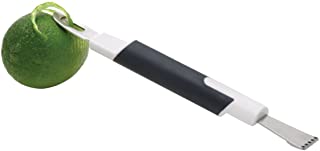
A channel knife, also known as a zester, is used to grate ingredients like chocolate, nutmeg, and fine lemon zest. Some will come double ended. One with a zesting end, which is essentially used for grating. The other end will have a circular end and allows for creating fancy fruit spirals.
2. Grater

A grater is used for grating spices, fresh herbs, and citrus fruits like oranges or lemons. The more you learn about crafting cocktails, the more creative you can get with a grater. If you have a lot of ingredients to grate or break down, the traditional grater will save you time over a double ended zester.
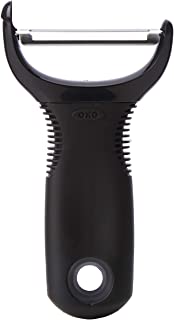
3. Vegetable Peeler
When you need a thick orange or lemon peel added to your drink, use a vegetable peeler. The peelers shaped like a “Y” are easier to use than the flat “l” shaped peelers.
4. Garnish Tongs
Technically, we should all be using tongs to garnish our drinks. Many states require it by law. Make sure you always have a set of small garish tongs nearby in case the health inspector comes in. And hey – use them, too. It looks better from the eyes of the consumer.
Miscellaneous Bartender Tools: The Non-Essentials
Now for the non-essential bartender tools. As a beginner bartender, chances are you’ll be rarely using these tools. If you do discover one of these items at your establishment, don’t be afraid of them! It’s always fun testing out alternative mixing techniques.
1. Mixing Glass
A mixing glass is a durable glass for mixing drinks. Instead of building your drink in the serving glass, some bartenders will opt for building the mixture in one of these glasses. Mixing glasses can be chilled and may come in handy when you want to keep the drinks (that are served without ice) cold.
2. Julep Strainer
Julep strainers are pretty old school but they’re still useful in some cases. They are used for straining stirred drinks (that only have liquid in them). Although your hawthorne strainer does the job just as well, julep strainers pose a more professional and traditional look.

3. Cobbler Shaker
Cobbler shakers are the cousins of the boston shaker. They do the same thing however, they aren’t as easy to use. I’ve heard it’s a good shaker to use for someone with very small hands. But I’ve also heard they aren’t great for working behind a busy bar.
4. Blender
Unless you’re working at a tiki-themed bar, you’ll rarely come across a blender. They are pricey, loud, and obnoxious. But they are great to puree your fruits, and for crafting frozen cocktails.
5. Glass Rimmer

Glass rimmers are commonly found at margarita joints. The tool allows you to easily rim your drink with garnishes. Old school trays work – with round compartments of sugar, salt, and sponge – but they can get dirty quickly. And they take up a lot of room.
6. Funnel
When you take your mixology knowledge to the next level – funnels will come in handy. They are great for making your own syrups, cocktail mixes, and for infusing whatever you may desire.
7. Cocktail picks
Cocktail picks give your drink an extra sense of style. Cocktails look great when garnished with picks. Throw some olives on them, pineapples, or whatever the recipe suggests. Most bars will use wooden or plastic picks but some may require you to use metal or glass picks. Fancy stuff right there.
Where To Buy Your Bartender Equipment?
There’s plenty of places where you can buy bartender tools. If you’re just a beginner, it’s wise to just use what the bar can provide. Buy a bar blade, some lighters, and bring some pens. But don’t buy everything I listed above off the bat. As you get more comfortable with your craft, and really want to spend time to excel as a bartender (not just as a part-time employee), it’s definitely worth investing in your own kit.
First and foremost, look into buying kits from a local retailer. Retailers that specialize in kitchen and bartending supplies, usually store quality items. If you’re searching for bartending tools online, make sure you do your research. The following online retailers are where you should look:
- A Bar Above (our suggestion)
- Amazon
- BarProducts.com
This brings me to my final piece of advice on kits. When you’re investing in these bar tools & equipment, it’s always best to shoot for the higher quality items. Trust me. Instead of buying the bartending kits that go for only $15, go for the kits that are priced around the $100 mark.
If you do so, these tools will last you an entire lifetime. The quality bartender tools will feel more comfortable in your hands. They will be sturdy. They won’t break. And they won’t tarnish.
But with that said, if you’re low on cash and need to practice immediately, go ahead and get that $15 kit. You can always invest in better equipment down the line – after you’ve earned a couple paychecks.

